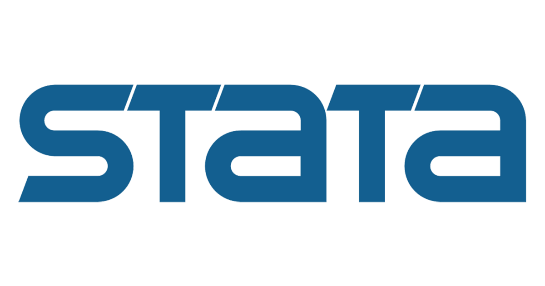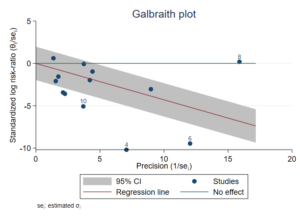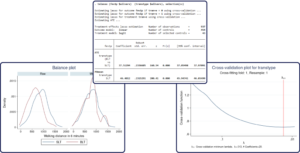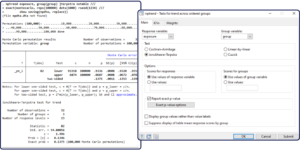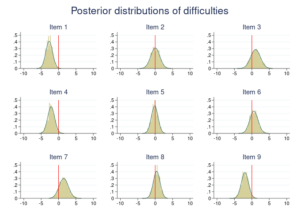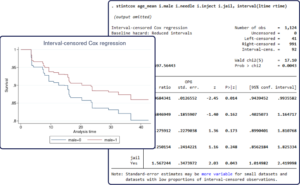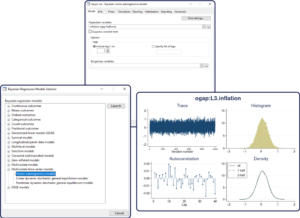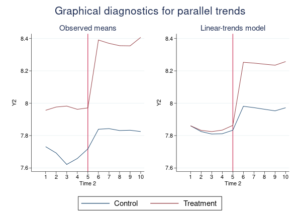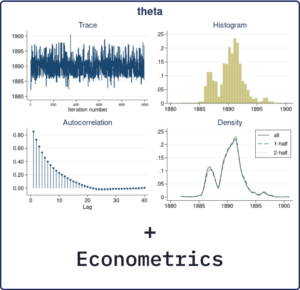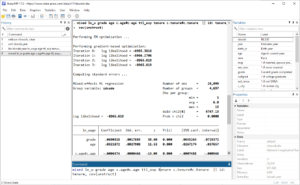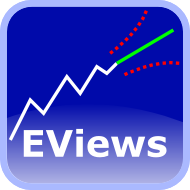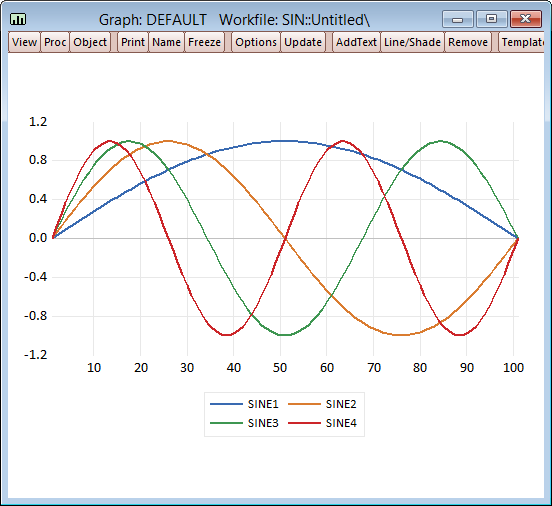Lorem ipsum dolor sit amet, consetetur sadipscing elitr, sed diam nonumy eirmod tempor invidunt ut labore et dolore magna aliquyam erat, sed diam voluptua
Stata
Product information "Stata"
🧮 Stata – The Powerful Statistical Software for Precise Data Analysis
Stata is a versatile and robust software solution renowned for its exceptional capabilities in time-based data analysis. With Stata, you can model everything from simple time series (e.g., ARIMA) to complex multivariate models such as VAR and VEC. It also supports GARCH models for volatility analysis and Kaplan-Meier estimators for survival analysis. For deep panel data insights, Stata offers powerful tools for mixed-effects modeling.
One of Stata's greatest strengths lies in its intuitive yet powerful programming language, which allows you to automate workflows and create custom statistical procedures with ease.
📊 Comprehensive Statistical Methods for Every Application
Stata covers the full range of classical statistical techniques—and much more. You can calculate descriptive statistics, run hypothesis tests (e.g., mean comparisons, normality tests—both parametric and non-parametric), and visualize your results in high-quality scientific graphs.
As a complete statistical package, Stata is ideal for research and development across disciplines. Researchers in sociology, economics, political science, epidemiology, and medical sciences especially benefit from Stata’s broad and high-quality suite of analytical tools.
🚀 Why Choose Stata?
✅ Optimized for research & development – Designed for complex data analysis and statistical evaluation
✅ Extensive features – A wide array of statistical and graphical capabilities, including publication-ready charts
✅ Flexibility – Exceptional for analyzing time-series data, volatility, and panel data
✅ Powerful yet user-friendly – Stata’s integrated programming language enables efficient automation of complex workflows
🎯 Stata Editions to Meet Your Needs
Whether you're a student or a senior researcher, Stata has a version tailored to your work:
-
Stata/BE (Basic Edition)
-
Stata/SE (Standard Edition)
-
Stata/MP (Multiprocessor Edition)
Choose the edition that fits your dataset size and analysis complexity.
🏥 Stata for Clinical Research and Medical Statistics
Stata is also a top-tier solution for clinical research and medical studies. It offers specialized tools for method validation, biostatistics, and regulatory-compliant data analysis, making it the ideal platform for precise, reliable, and reproducible results in clinical environments.
📈 Conclusion: Stata empowers researchers and analysts with the tools to handle complex data and gain deeper insights—efficiently, accurately, and intuitively.
📥 Learn more or try Stata today on the official Stata website.
🧮 Stata/BE – Comprehensive Statistical Software for Research and Development
Stata/BE is a powerful and versatile statistical software package, designed to meet the needs of researchers, analysts, and scientists across a wide range of disciplines. Whether you're working in sociology, economics, political science, epidemiology, or medical research, Stata offers advanced analytical tools tailored to your field—including survival analysis, panel data models, and more.
Compatible with all major operating systems, Stata runs seamlessly on Windows, macOS, and Unix/Linux platforms.
🎯 Choose the Right Stata Edition for Your Needs
Whether you're a student, data scientist, or senior statistician, Stata comes in three editions to suit every use case:
-
Stata/MP – The fastest and most powerful version, optimized for multicore computers (up to 64 cores)
-
Stata/SE – Ideal for analyzing large datasets
-
Stata/BE – The standard edition, perfect for everyday statistical work
Stata/MP delivers exceptional performance with full multiprocessing support. It's up to 40% faster than Stata/BE for demanding tasks and supports datasets with up to 1 trillion observations (hardware-dependent). Perfect for high-performance computing environments.
Stata/SE and Stata/BE share the same feature set but differ in data size capacity:
| Edition | Max Observations | Max Variables |
|---|---|---|
| Stata/BE | 2 billion | 2,048 |
| Stata/SE | 2 billion | 32,767 |
| Stata/MP | 20+ billion | 120,000+ |
📊 Full Statistical Functionality with High-Quality Graphs
All versions of Stata provide the full suite of features:
-
Advanced statistical methods and econometric models
-
Publication-quality graphics with full customization
-
Powerful data management tools – merge datasets, create new variables, and transform data easily
-
Mata programming language – a fast, flexible matrix language for automation and custom algorithms
✨ What’s New in Stata?
Stata 17 introduced powerful new features:
✅ Tables – Create and export regression tables and summary statistics to Word®, Excel®, PDF, or LaTeX
✅ Bayesian Econometrics – Support for Bayesian VAR, panel models, and more
✅ Faster Performance – Improved algorithms for sorting, summarizing, and other operations
✅ Difference-in-Differences (DID) & Triple Differences (DDD) – Estimate common econometric DID models with didregress and xtdidregress
✅ Interval-Censored Cox Models – Analyze time-to-event data with interval censoring using the new stintcox model
🔍 Stata/BE – Designed for Researchers, Built for Performance
-
✅ Multicore support for faster results (Stata/MP)
-
✅ Clean, customizable visualizations for scientific publications
-
✅ Scalable data analysis for small to very large datasets
-
✅ Efficient, scriptable workflows for reproducible research
Whether you're conducting a simple t-test or running high-dimensional panel regressions, Stata provides a complete, reliable, and flexible environment for your data analysis needs.
📢 Ready to take your research to the next level?
🎓 Try Stata today and experience the speed, power, and precision that top researchers trust.
➡ Visit the official Stata website for demos, pricing, and more.
Systemanforderung
Stata for Windows
- Windows 10*
- Windows 8*
- Windows Server 2019, 2016, 2012*
* 64-bit for x86-64 made by Intel® and AMD
Stata for Mac
- Mac with Apple Silicon or 64-bit Intel processor
- macOS 11.12 (Sierra) or newer for Macs with Intel processors and macOS 11.0 (Big Sur) or newer for Macs with Apple Silicon
Stata for Linux
- 64-bit (x86-64)
- For xstata, you need to have GTK 2.24 installed
Hardware-requirements
- Minimum of 1 GB of RAM für IC, 2 GB RAM für SE, 4 GB RAM für MP
- Minimum of 2 GB of disk space
- Stata for Unix requires a video card that can display thousands of colors or more (16-bit or 24-bit color)
Details
System requirements
Stata for Windows
- Windows 10*
- Windows 8*
- Windows Server 2019, 2016, 2012*
* 64-bit for x86-64 made by Intel® and AMD
Stata for Mac
- Mac with Apple Silicon or 64-bit Intel processor
- macOS 11.12 (Sierra) or newer for Macs with Intel processors and macOS 11.0 (Big Sur) or newer for Macs with Apple Silicon
Stata for Linux
- 64-bit (x86-64)
- For xstata, you need to have GTK 2.24 installed
Hardware-requirements
- Minimum of 1 GB of RAM für IC, 2 GB RAM für SE, 4 GB RAM für MP
- Minimum of 2 GB of disk space
- Stata for Unix requires a video card that can display thousands of colors or more (16-bit or 24-bit color)

